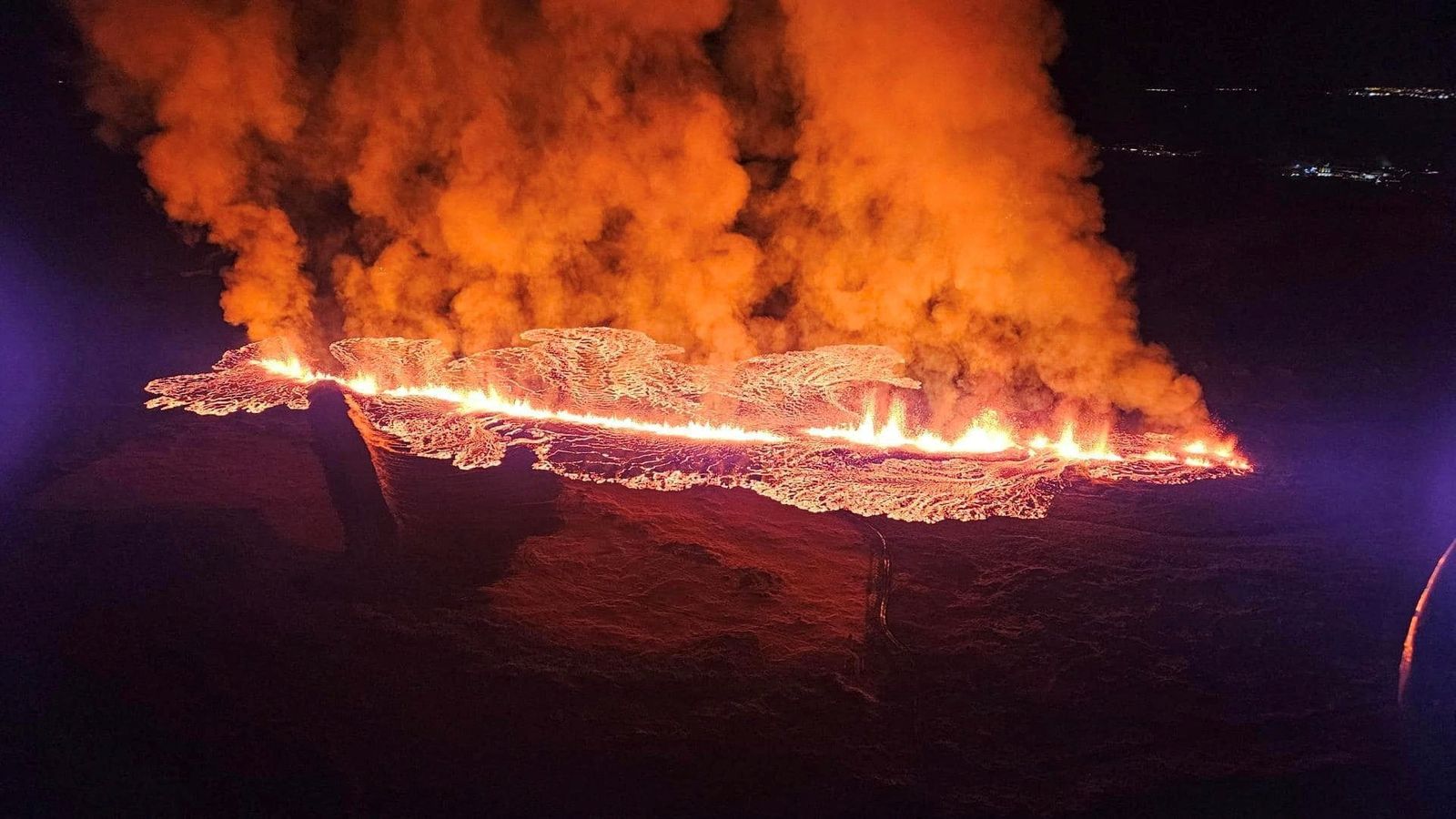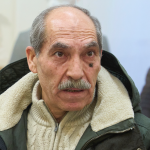A volcano has erupted in the same peninsula in southwest Iceland where molten rock was seen spewing from fissures in the ground in December.
The eruption began north of the town of Grindavik, which was evacuated overnight amid fears an eruption might be imminent due to a swarm of seismic activity.
Barriers of earth and rock were built to prevent lava from reaching Grindavik, but the latest eruption appears to have penetrated the defences.
The eruption came after a series of earthquakes near the town, the Icelandic Meteorological Office said.
“Lava is flowing a few hundred metres north of the town – this is 400 to 500 metres,” Kristin Jonsdottir, from the Icelandic Meteorological Office (IMO), told Iceland’s RUV television.
“Lava flows towards Grindavik.”
The IMO said in a separate statement: “According to the first images from the coast guard’s surveillance flight, a crack has opened on both sides of the defences that have begun to be built north of Grindavík.”
Middle East crisis – live updates: Militants killed attempting to cross from Lebanon into Israel; world marks 100 days of war
Scramble to contain a cholera crisis in Zambia
Colombia: At least 34 dead after mudslide covers highway
Sunday’s eruption is the fifth to take place in the Reykjanes peninsula since 2021, RUV reports.
It comes weeks after intense earth activity in the region culminated in a spectacular eruption in December, with lava emerging from a two-mile-long crack in the Earth’s surface.
December’s eruption started in the Svartsengi volcanic system following the complete evacuation of the town of Grindavik’s 4,000 inhabitants and the closing of the Blue Lagoon geothermal spa, a popular tourist spot.
Grindavik was ultimately spared as the lava flowed in a different direction from the town.
Residents of Grindavik had been evacuated from their homes in November and had to stay away from the town for six weeks following a series of earthquakes and the eventual eruption.
They were allowed to return on 22 December.
On Saturday, rescuers were searching for a man who fell into a crack in the ground that opened up after last month’s eruption.
The man had been working to fill crevasses formed by earthquakes and volcanic activity in Grindavik, according to local media.
Hundreds of people have been looking for him since Wednesday but had to stop shortly before midnight on Thursday due to a rockfall.
Iceland, which sits above a volcanic hot spot in the North Atlantic, averages an eruption every four to five years.
The most disruptive in recent times was the 2010 eruption of the Eyjafjallajokull volcano, which spewed huge clouds of ash into the atmosphere and led to widespread airspace closures over Europe.






















